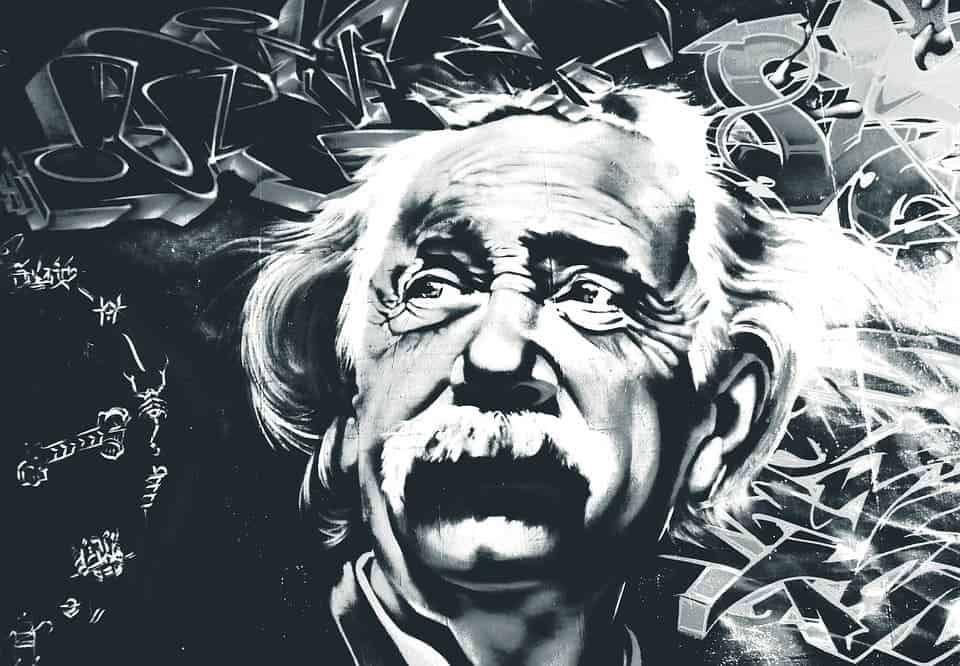It’s hard to find a stranger, more exotic phenomenon in physics than quantum entanglement — the idea that two entangled particles can influence each other’s state instantly even when they’re light-years apart. The whole idea is so baffling that Einstein famously referred to it as ‘spooky action at a distance.’
The physicist had a lot of qualms with quantum entanglement, such as the fact that it contradicts so-called “local realism” — the idea that things have properties whether or not you observe them. Now, the most sophisticated experiment of its kind to date has confirmed quantum entanglement, proving Einstein wrong.
The randomness of humanity
The huge international collaboration involved more than 12 teams of researchers in 10 countries as well as 100,000 volunteer gamers. Scientists called the experiment the Big Bell Test — a Bell test is an experiment designed to test the validity of quantum entanglement.
Such tests were first introduced during the 1960s by the Irish physicist John Bell who proposed testing quantum entanglement by comparing randomly chosen measurements, like the polarization of two entangled particles that exist in different locations. If the number of times that the state measurements of the two particles mirror each other goes above a certain threshold, this suggests the separated particles enter their state only at the moment they are measured. The immediate consequence is that the particles can communicate instantly with each other. Spooky, indeed!
At the same time, this behavior contradicts the principle of local realism (upon which classical physics is based) –– the idea that phenomena and objects function irrespective of whether someone’s watching or not.
The problem with Bell tests, however, is that what you choose to measure has to be truly random. Even a computer random generator isn’t truly random, which is why scientists had to think outside of the box to design this experiment. Humans are pretty random and when they collectively number in the thousands, we humans can be unpredictable enough to fulfill the strict criteria for a Bell test.
The physicists recruited a staggering 100,000 people who were invited to play a smartphone game called the Big Bell Quest. Each player had to press two buttons on a screen, with respective values of one and zero. All of these random choices were used by different labs across five continents to select measurement settings for comparing entangled particles. Each lab performed a different experiment using different particles. For instance, single atoms, groups of atoms, photons, and so on.
When all the results were aggregated and compared, they suggested that local realism is not universally valid, confirming spooky action at a distance.
“We showed that Einstein’s worldview of local realism, in which things have properties whether or not you observe them, and no influence travels faster than light, cannot be true — at least one of those things must be false,” Morgan Mitchell, a professor of quantum optics at the Institute of Photonic Sciences in Barcelona told Live Science.
There are two possible explanations of these findings: either our observations actually change the state of the observed or particles are communicating with each other through some unbeknownst means that is yet invisible to us.
“What is most amazing for me is that the argument between Einstein and Niels Bohr, after more than 90 years of effort to make it rigorous and experimentally testable, still retains a human and philosophical element. We know that the Higgs boson and gravitational waves exist thanks to amazing machines, physical systems built to test the laws of physics. But local realism is a question we can’t fully answer with a machine. It seems we ourselves must be part of the experiment, to keep the Universe honest,” Mitchell said in a statement.
All of this is quite a lot to swallow in one go but, at the end of the day, it’s impressive how far science has come and how much we can learn about the universe if we collaborate. Imagine what one million or one billion minds would be able to achieve when they put their minds to it.
“I also particularly enjoyed the outreach and public involvement side,” said Geoff Pryde from Griffith University in Australia.
“I enjoyed that we gave people an opportunity to do something which influenced how the experiment ran.”
Scientific reference: Challenging local realism with human choices, The Big Bell Test Collaboration, Nature 2018.










